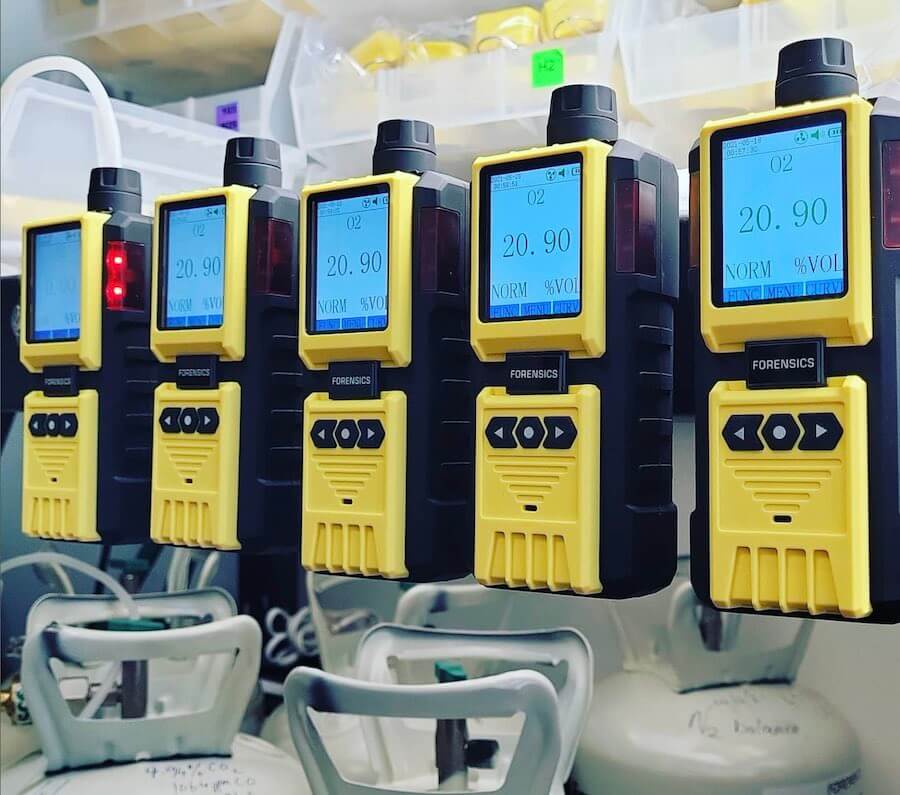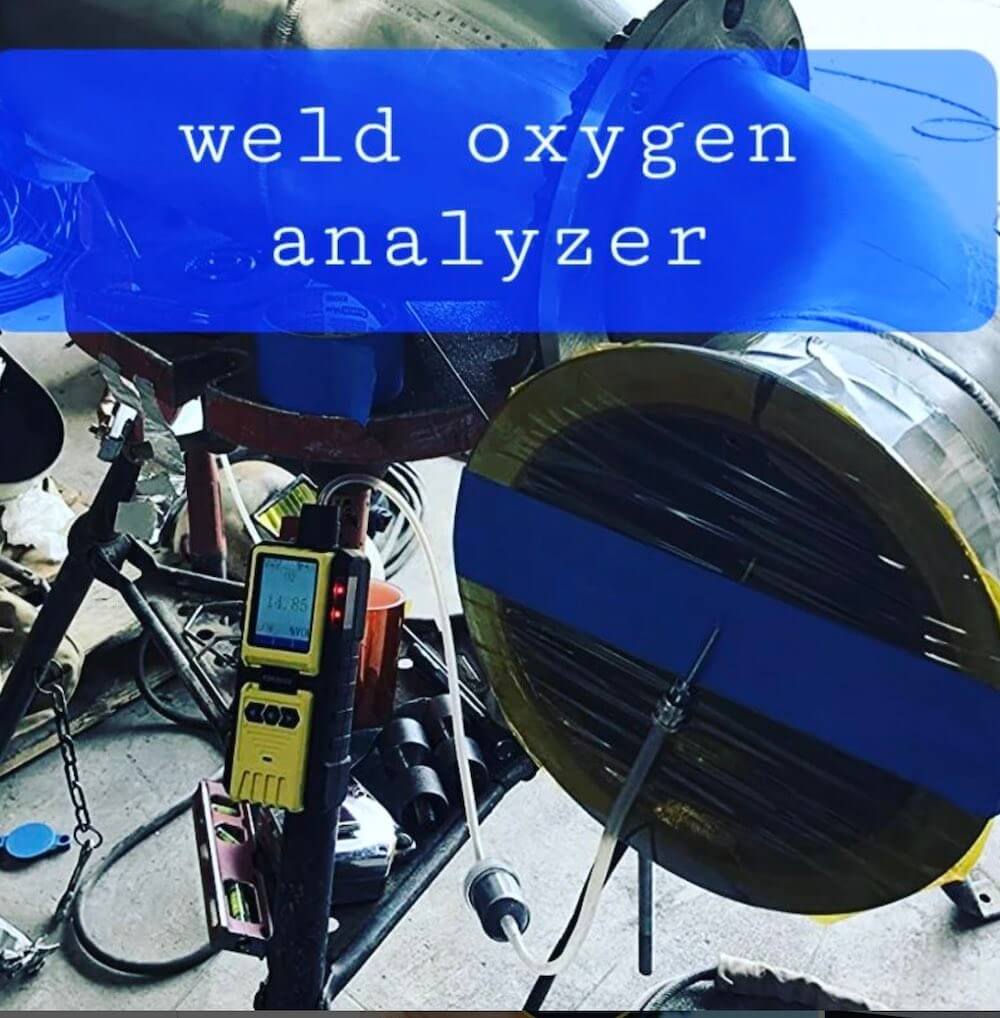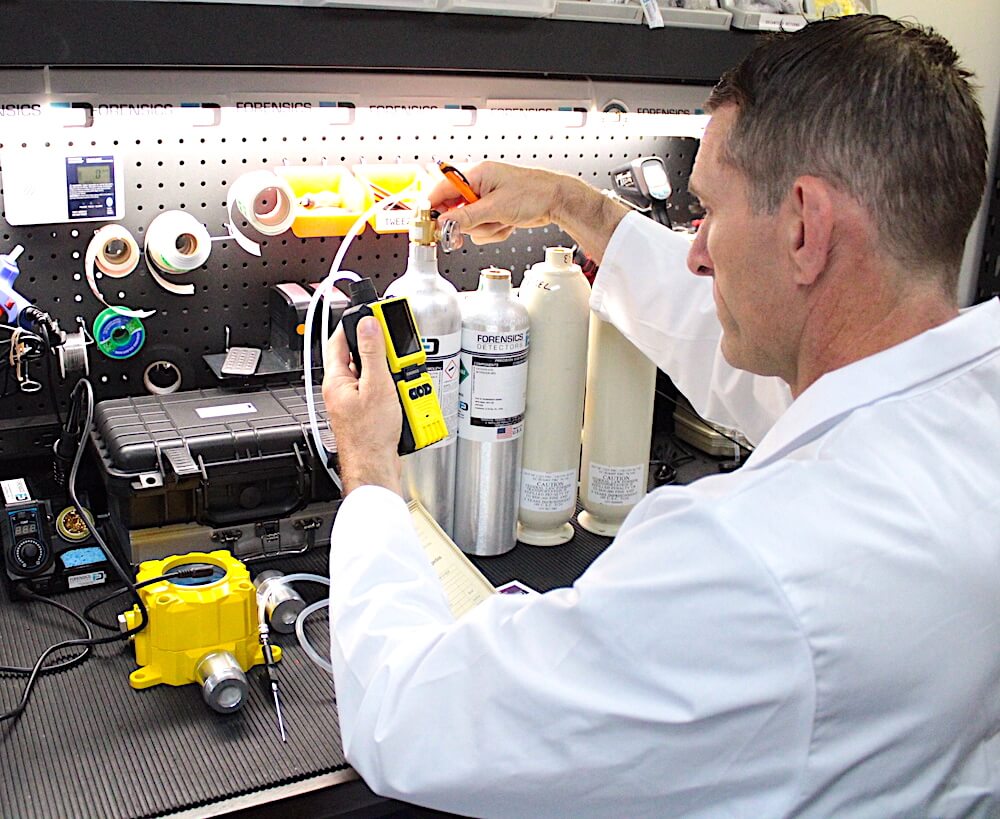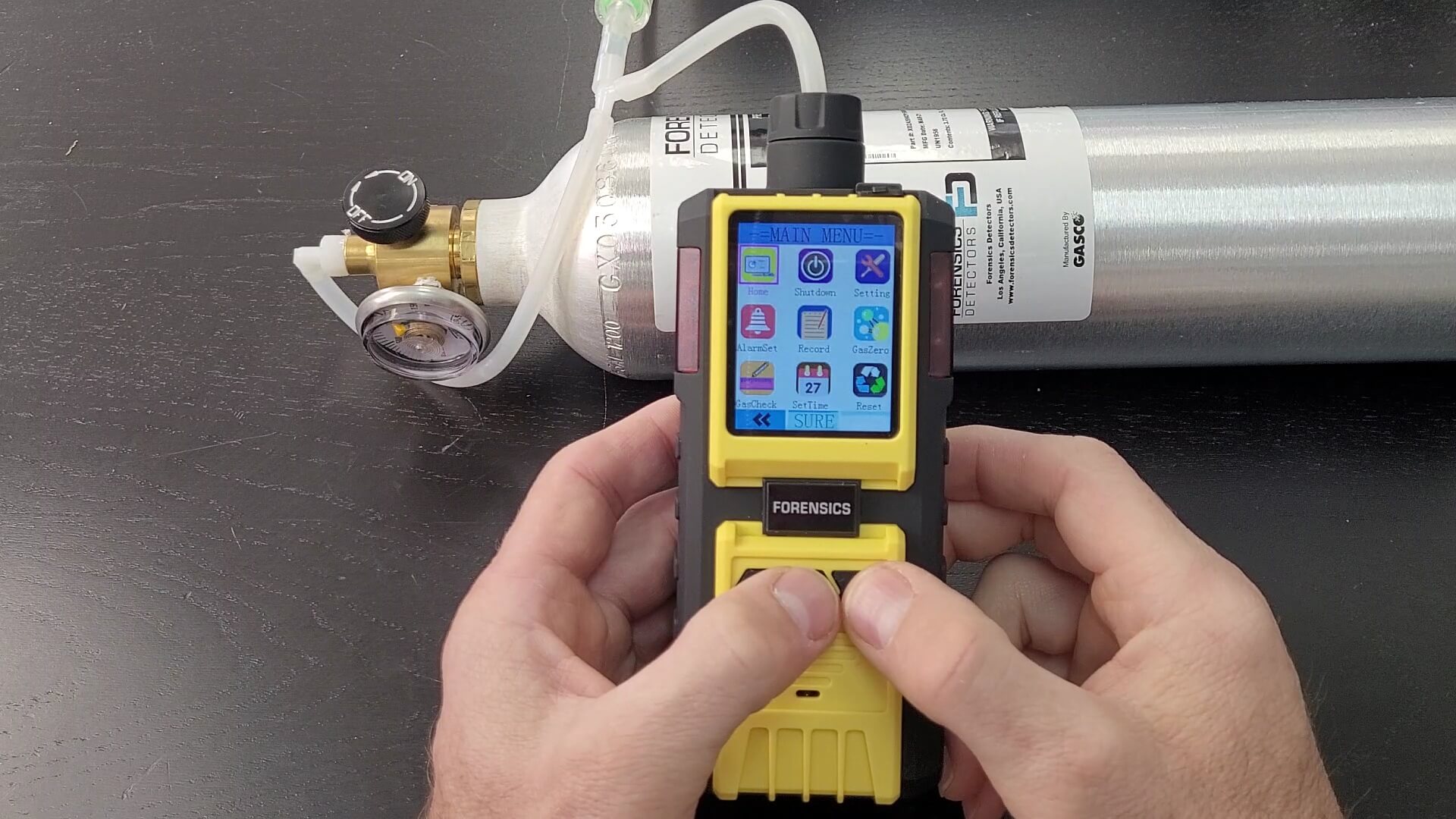An oxygen leak analyzer is a gas analyzer used to find and measure oxygen leaks in various settings. It's particularly important in places like welding, hospitals, factories, and aerospace facilities where controlling oxygen levels during a certain process is critical.
Pros |
Cons |
|
✅ O2 analyzer prices have dropped as low as $500. ✅ Reducing oxygen improves weld joints. ✅ Simple, fast, and small units. |
⛔ Oxygen becomes dangerous to life when displaced to less than 19.5%. Care must always be taken to prevent low levels of O2. ⛔ Oxygen analyzers can get very expensive. ⛔ Electrochemical oxygen sensors have a limited life from 2 to 3 years. |
What Is The Best Oxygen Leak Detector?
There are many oxygen leak detectors on the market with different features. Specifically for leak detection, the unit must have a built-in pump and probe for easier leak detection and 0.01% (100 ppm) resolution for maximum sensitivity.
- Forensics Detectors Oxygen Analyzer
- Pipe Purge Masters Weld Purge Monitor
- Argweld Weld Purge Monitor
- Tec Pen Weld Purge Monitor
- Argo-Naught Oxygen Analyzer for Welding
- Pipe Tools Oxy Pro
- Aquasol Oxygen Monitor for Welding
- AII GPR-1000 WP Pipe Weld Purge PPM Oxygen Analyzer
- AMI Oxygen Analyzers for Welding
- Orbitec Oxygen Analyzers for Welding
- Alpha Omega Instrument Trace Oxygen Analyzers
Applications for Oxygen Leak Detectors
Oxygen leak detectors are used by various industries where the presence of oxygen is critical and leaks can be dangerous. Some of the industries that use oxygen leak detectors include:
- Aerospace industry: Oxygen leak detectors are used in spacecraft, aircraft, and other aerospace equipment to detect any leaks that could cause a fire or explosion.
- Welding industry: Use oxygen detectors to ensure no oxygen is leaking in their inert welding environment. Used for TIG or MIG welding to confirm low oxygen content in inert environments. The device accurately monitors oxygen levels while using inert gas to purge stainless steel, titanium, and other reactive metals.
- Healthcare industry: Oxygen leak detectors are used in hospitals and other healthcare facilities to detect any leaks in oxygen delivery systems that could put patients at risk.
- Manufacturing industry: Oxygen leak detectors are used in manufacturing plants that use oxygen in their production processes to ensure the safety of workers and prevent accidents.
- Mining industry: Oxygen leak detectors are used in mines to detect any leaks in the oxygen supply systems used by miners to breathe.
- Modified Atmosphere Packaging: Used it confirm oxygen leakage in food headspace analysis. In this application needle probes are used to obtain the air sample and a specific setup for headspace oxygen analysis is required.

How to Test for an Oxygen Gas Leak?
To test for a oxygen gas leak, take the following steps:
- Use an Oxygen Leak Detector: Acquire an oxygen leak detector and use it at suspected oxygen locations. If you are using a nitrogen flush to reduce oxygen (depletion), take your time to find any oxygen leaks.
- Monitor the oxygen %vol Readings: Allow the oxygen leak detector sufficient time to sample suspected leak areas and provide accurate readings. Monitor the detector's display or indicators for any changes in oxygen levels. Don't forget normal air has 20.9% of air. Most typically you will be looking for higher or lower values than this.
- Leak fixing: If a leak has been found. Take note of its location and tag the location. Address the leakage with an appropriate engineer or technician.
What Does An Oxygen Gas Leak Smell Like?
Oxygen itself is an odorless and colorless gas, so it does not have a smell. This means that an oxygen gas leak cannot be detected by smell alone.
However, if the oxygen is being stored or used in a system that also contains other gases or chemicals, such as nitrogen or argon, a leak in that system may produce a smell. For example, if the oxygen is being used in a welding process, a leak in the system could produce a smell of burning or hot metal.
Oxygen Leak Testing for Welding
When performing TIG welding, it is important to monitor the oxygen concentration in the welding environment. This is because TIG welding uses an inert gas, typically argon, to shield the weld from the surrounding air. If the oxygen concentration in the welding environment is too high, it can react with the shielding gas and cause defects in the weld, such as porosity or oxidation.
Therefore, using an oxygen monitor during TIG welding is necessary to ensure that the oxygen concentration in the welding environment is within safe levels. The oxygen monitor can alert the welder if the oxygen concentration exceeds a certain level, allowing them to take appropriate action, such as adjusting the shielding gas flow or increasing ventilation in the area. This helps to ensure the quality and integrity of the weld, reducing the risk of defects and improving overall product quality.

How Long Does the Oxygen Gas Sensor Last?
The lifespan of an oxygen electrochemical sensor is about 2 to 3 years. The sensor's lifespan is influenced by factors such as operating temperature, humidity, exposure to contaminants, and the frequency of calibration and maintenance.
How often should I test or calibrate my Oxygen Leak Detector?

How Does an Oxygen Leak Detector Work?
An oxygen leak detector works by sensing the presence of oxygen gas in the air and alerting the user when it is detected. This is done by employing a electrochemical oxygen cell sensor that resides within the analyzer. An oxygen leak detector is a digital instrument with an electrochemical oxygen-sensing cell that produces an electrical signal proportional to the oxygen concentration. This signal is then processed by the detector's electronics. This allows the analyzer to display a quantitative representation of oxygen levels in %vol. The relationship between the voltage output and the O2 %vol reading is established through calibration, where a known concentration of O2 gas is used to determine the corresponding output voltage of the sensor. This calibration process ensures accurate and reliable measurements from the analyzer.

How Should I Store my Oxygen Leak Detector?
To ensure maximum sensor life and accurate measurements upon operation, it is recommended to store the Oxygen Leak Detector in a moderate environment with a humidity level of 50%RH and a room temperature of approximately 70F. The unit should be kept in the hard waterproof case it was sold with for optimal storage conditions.
What is the Maintenance Schedule for my Oxygen Leak Detector?
To ensure safety we recommend the following schedule for your oxygen leak detector. For those working in dangerous confined spaces, we recommend bump testing daily. For R&D where accuracy is upmost important, we recommend calibration daily. In general however, the tests and schedules that are important to ensure, operation, accuracy, and safety include the:
- Bump Testing (weekly to monthly, sometimes even daily)
- Calibration Schedule (every 12 months)
-
Replacement Schedule (2-3 year sensor replacement)
What is the Difference between an Oxygen Leak Detector and an Oxygen Analyzer?
There are many types of oxygen detection equipment, and sometimes they refer to the same device but use different names. An oxygen leak detector can also be called an oxygen detector, oxygen analyzer, oxygen depletion monitor, oxygen depletion analyzer, oxygen deficiency monitor, or oxygen displacement meter. Some of these different oxygen detectors are shown below.
What Are The Distinguishing Smells That Indicate A Potential Oxygen Line Breach?
Pure oxygen is odorless, so there are no direct distinguishing smells.
Conclusion
- An oxygen leak detector is a device that detects the presence of oxygen leaks in a system or environment.
- It is used in industries where oxygen is critical and leaks can be dangerous, such as aerospace, healthcare, and manufacturing.
- Oxygen leak detectors are often equipped with audible and visual alarms to alert the user of a leak.
- Oxygen leak detectors are essential for ensuring the safety of workers and preventing accidents in environments where oxygen is used or stored.
- Regular maintenance and calibration of oxygen leak detectors is important to ensure their accuracy and reliability.
About The Author
Dr. Kos Galatsis ("Dr.Koz") is the President of FORENSICS DETECTORS where the company operates from the scenic Palos Verdes Peninsula in Los Angeles, California. He is a subject matter expert on gas sensor technology, gas detectors, gas meters, and gas analyzers. He has been designing, building, manufacturing, and testing toxic gas detection systems for over 20 years.

Every day is a blessing for Dr. Koz. He loves to help customers solve their unique problems. Dr. Koz also loves spending time with his wife and his three children going to the beach, grilling burgers, and enjoying the outdoors.
Read more about Forensics Detectors here.
Email: drkoz@forensicsdetectors.com

